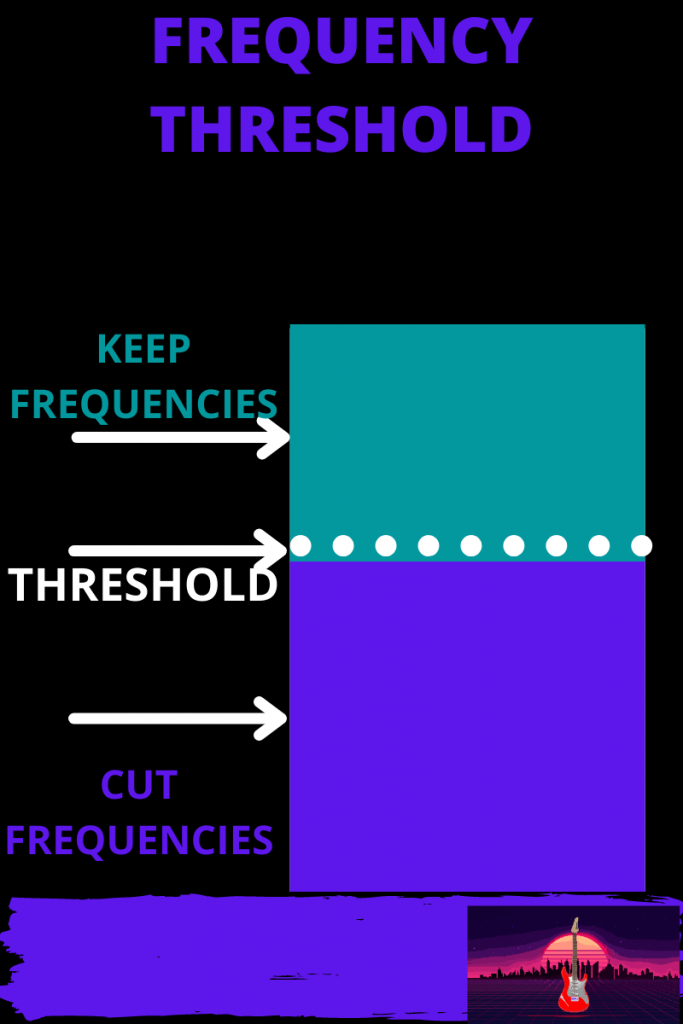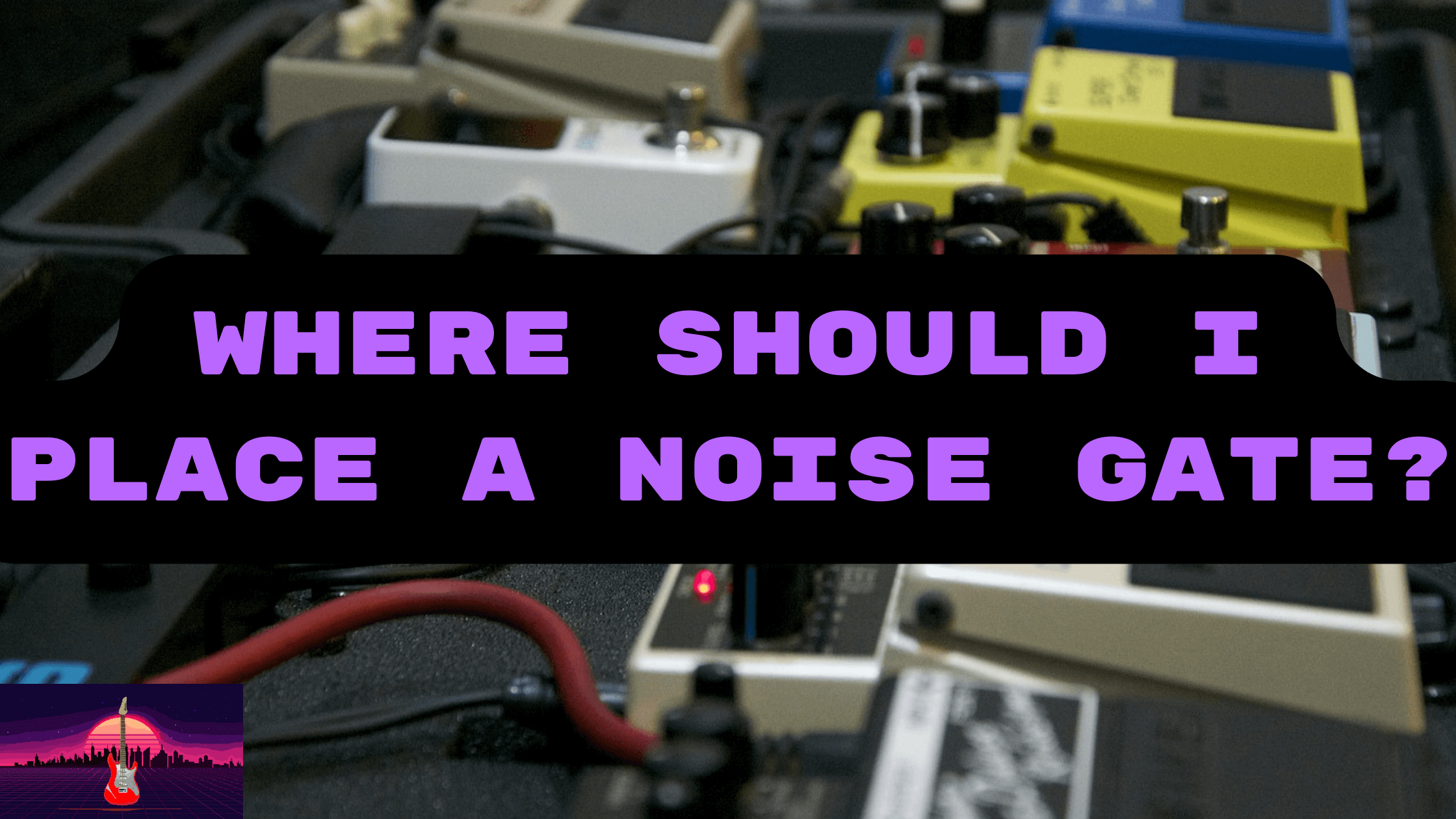Where should you put your noise gate pedal?
This is a very common question when you first buy one of these pedals, and because a different position in the signal chain can greatly change the overall sound of your rig it can be difficult to know where to place one of those stompboxes.
How can we put our noise gate without altering (in a bad way) the sound of our axe?
Indice dei contenuti
HOW DOES A NOISE GATE WORK
A noise gate works with a built-in gate that set two different areas inside the pedal:
- under that gate the sounds will be muted and reduced (we can usually choose whether to totally cut the sounds and the frequencies under the gate or simply make them smoother);
- above the gate that we set for the pedal, where the sounds will remain the same
With this design, we can filter out the hum and the background noises that we may hear with our guitar, may it be for an high-gain setting, for the interaction between our pedals or for other hardware-related reasons.
The most common knobs and commands that we may have on our model are:
- Threshold: it sets when the gate will open, and therefore how much will it filter (a low threshold will filter more frequencies);
- Decay: how fast the gate closes (a high decay will close the gate almost immediately, giving a sudden silence, while a lower decay will result in a smoother sound attenuation);
- Release: how fast the gate opens (the opposite of the decay);
- Hold: how many time will the gate remain open before being closed again

POSITION IN THE PEDAL CHAIN
This pedal should be placed right after the source of the noises, obviously, but how can you know what is the cause of that hum and noise?
A great way for discovering the origin of the feedbaks and of that nasty sound is to check first plugging your guitar right into the amp, moving to try each single pedal on its own, in order to understand what is the critical point.
Anyway, talking generally, two of the most common points for the gates are at the start of the chain (because of the sounds of your fingers and other metallic sounds that could be deleted with a frequency filter and therefore with a noise gate) and also at the end of the chain, or otherwise before modulation pedals and reverbs or delays (placing it after those types of effects can make a flat sound and also make a dull tone, and for this reason placing the gate before them won’t alter them in a bad way).
Another nice point can be after distortions and fuzzes, that especially with high-gain settings can make quite a bit of hum and unwanted noises, but those are only some of the most common placements.
Let’s see other popular placements and options as well.
NOISE GATES: BEFORE OR AFTER COMPRESSORS?
The best choice is placing the gate before the compressor.
A compressor pedal will always bring out weaker sounds and try to put at the same level the louder sounds by making them less loud: for this reason, if you place first a compressor pedal you’ll have the unwanted noises (that were the weaker sounds) even louder, and you’ll need to set a way more aggressive noise gate, probably altering your own tone.
For this reason, it’s better to place first the gate pedal, deleting the unwanted sounds, and after the compressor, that will enhance the overall sound but without the bad stuff (the hum and the background noises).
AMP —-< COMPRESSOR—-< N. GATE—-< GUITAR
BEFORE OR AFTER FUZZ/OVERDRIVE/DISTORTIONS?
The answer in this case is: it depends.
Mainly because of where your distortion pedals are placed, as well as how many pedals there are before: you may have more than one noise source and for this reason you may have to place more than one gate for your signal chain.
In general, though, the ideal position is right after the distortion pedal, because distortions (especially with high-gain settings) are one of the main noise-makers in your guitar rig: placing it after your overdrive, fuzz or any other distortion will cut out the bad unwanted frequencies.
AMP —-< N. GATE —-< DISTORTION/ OVERDRIVE / FUZZ —-< GUITAR
BEFORE OR AFTER DELAY / REVERB /MODULATIONS?
The noise gate should be placed before delays, reverbs and other modulation effects (such as phaser, chorus, flangers and so on), because if you placed after you’ll often have duller sounds and less articulation from these pedals.
If you place it before, instead, your modulation pedals will work as usual and you’ll cut the noises right before the processing of those guitar effects.
AMP —< REVERB/DELAY/MODULATION PEDALS —-< N. GATE —-< GUITAR
NOISE GATE: IN FRONT OF AMP OR IN EFFECTS LOOP?
The effects loop in an amp works by adding effects right after the preamp of the amplifier: for this reason, it can be considered as the last point before the sound actually comes out of the speakers of the amp, and it already has all the effects stacked into the sound.
Adding another effect right into the effects loop (in this case a noise gate) will influence the signal with all the effects added into it, and therefore you can cut the frequencies right with the final sound.
This a good option because you’ll cut out the bad frequencies directly with the almost-final sound, and also useful if you have more distortions or more noise-making pedals in your chain.
THE 4 CABLE METHOD
This is another great method for deleting the feedback and the background noise using any gate with Input, Output and also a Send and Return (some pedals with that design are the TC Electronic Sentry, the EHX Silencer and the BOSS NS-2 Noise Suppressor).
Explaining this method with words would be kinda pointless in my opinion, so here’s a video from Youtube (not my video, just the best I’ve found about this)!

